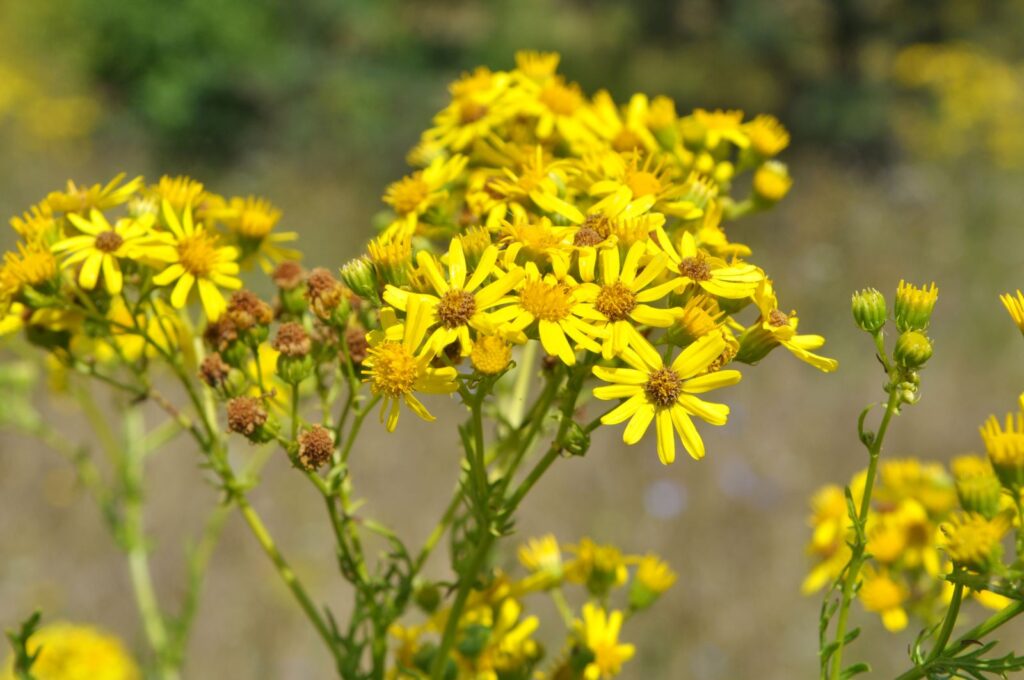Farmers advised to be on the lookout for ragwort and hemlock poisoning
12th September 2023
Following ragwort and hemlock poisoning cases reported in cattle and pigs by the Animal and Plant Health Agency (APHA), AHDB is urging farmers to make sure they are familiar with the signs of toxicity and be on the lookout for poisonous plants in their fields.

While many poisonous plants are unpalatable and won’t be ingested by livestock under normal circumstances, it is more likely to happen when there is a shortage of grass, such as after a period of dry weather or when pastures are overgrazed.
Therefore, farmers should avoid having a high stocking density wherever possible, and regularly monitor fields for the presence of poisonous plants to protect livestock.
As ragwort is usually well-managed on UK pastures, poisoning is more likely to occur following the ingestion of the dried plant from hay or silage. Signs of ragwort poisoning include lethargic behaviour, weight loss, oedema and diarrhoea, with raised liver parameters on biochemistry testing.
Once clinical signs appear, there is no effective treatment to stop the disease from spreading. Farmers should remove and destroy all contaminated feed and evacuate animals from fields where ragwort has been detected.
Cattle are much more susceptible to ragwort than sheep and are therefore at increased risk of poisoning. Using selective herbicides is usually enough to achieve reasonable control of the weed.
Another prevalent and deadly poisonous plant is hemlock water dropwort (HWD), which is especially common in the south and west of the UK, as well as Northern Ireland. It tends to grow in wet areas around field margins, and if often found near ditches and streams.
Cattle are particularly at risk of poisoning after ditches have been cleared out, exposing the most toxic part of the plant, the roots (also known as “dead man’s fingers”).
Symptoms of HWD poisoning include neurological signs such as dilated pupils, salivation, difficulty breathing and spasmodic convulsions, which are characterised by the animal shaking violently with short periods of relaxation in between.
Unfortunately, in most cases, HWD poisoning leads to sudden death and there is no specific treatment to neutralise the ingested toxin. A small percentage of animals may survive, which will then exhibit diarrhoea during the recovery phase.
Find out more about plant poisoning in livestock and sign up to alerts here.
